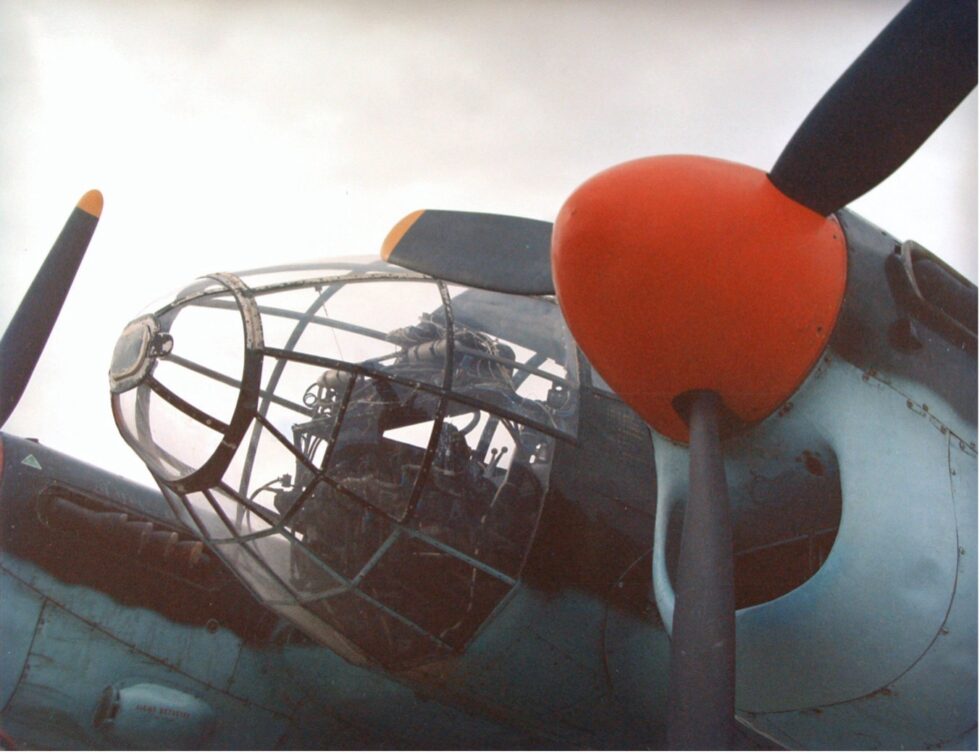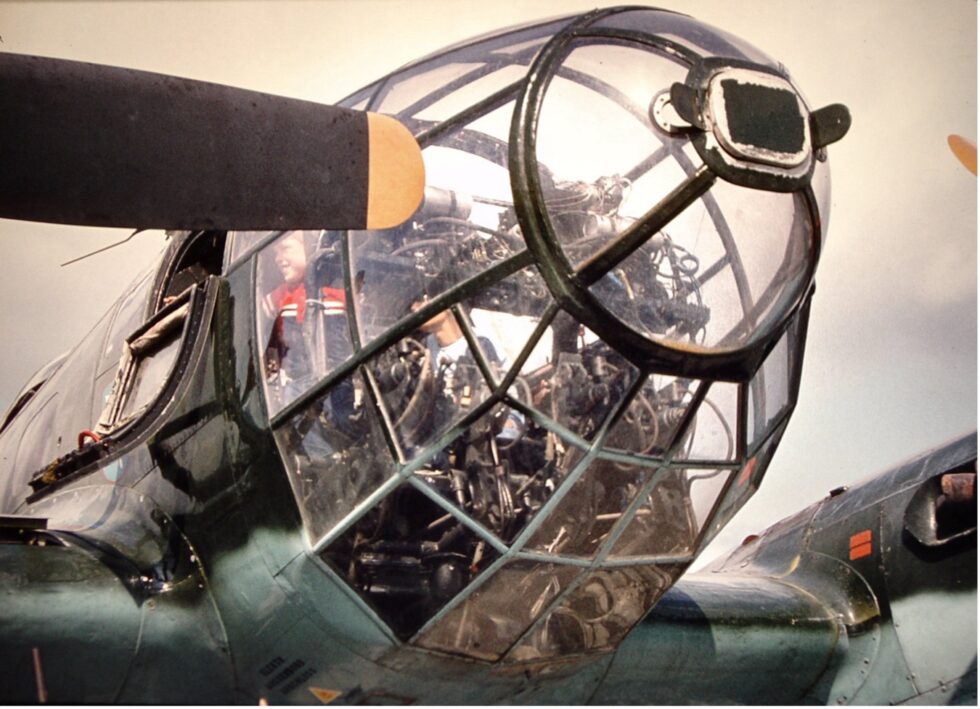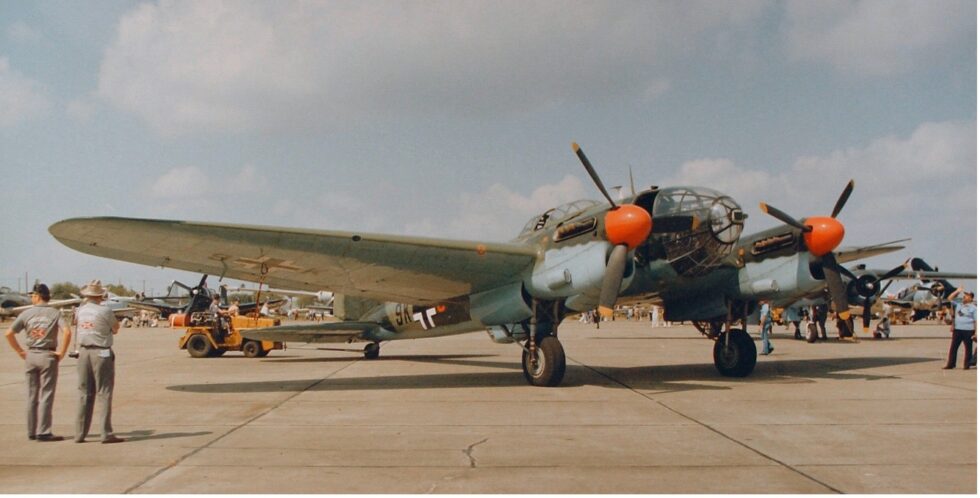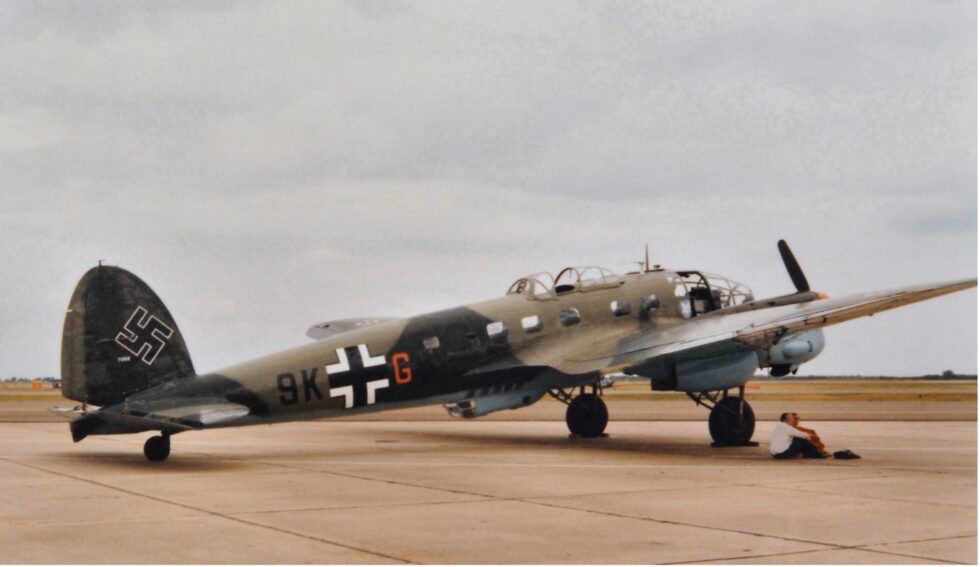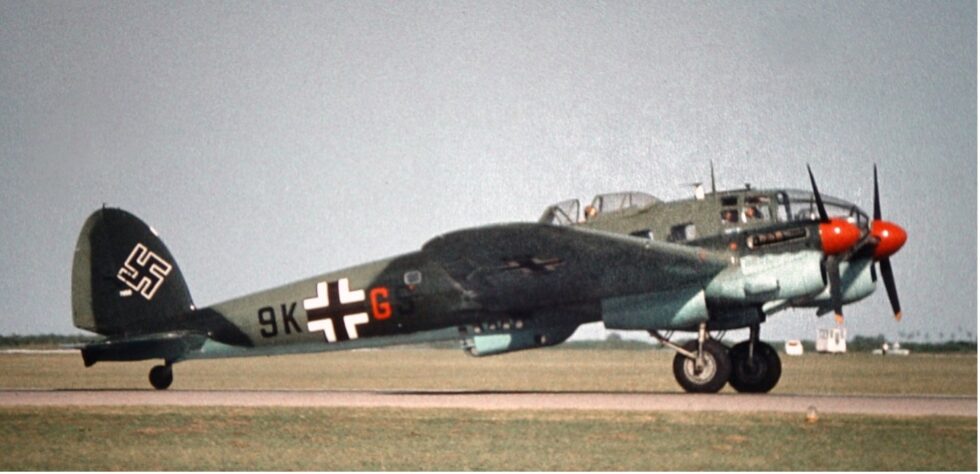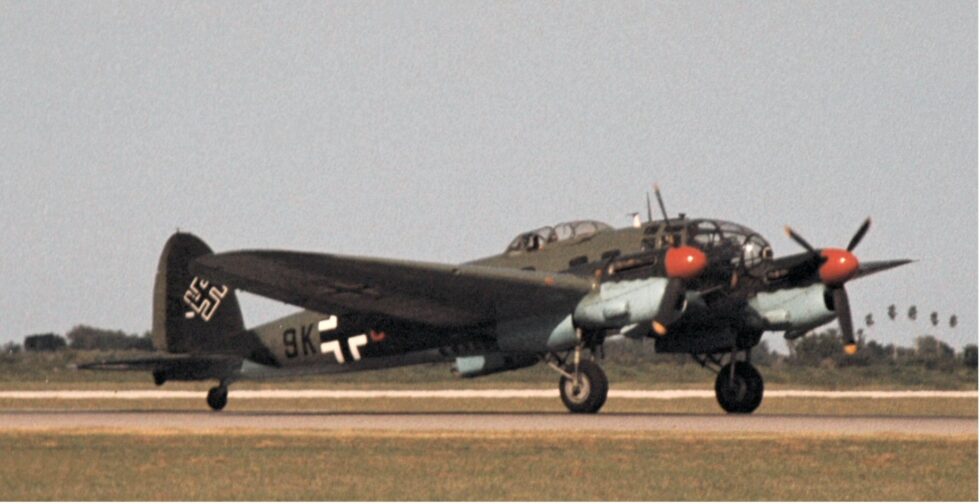CAF Heinkel HE-111-P-2
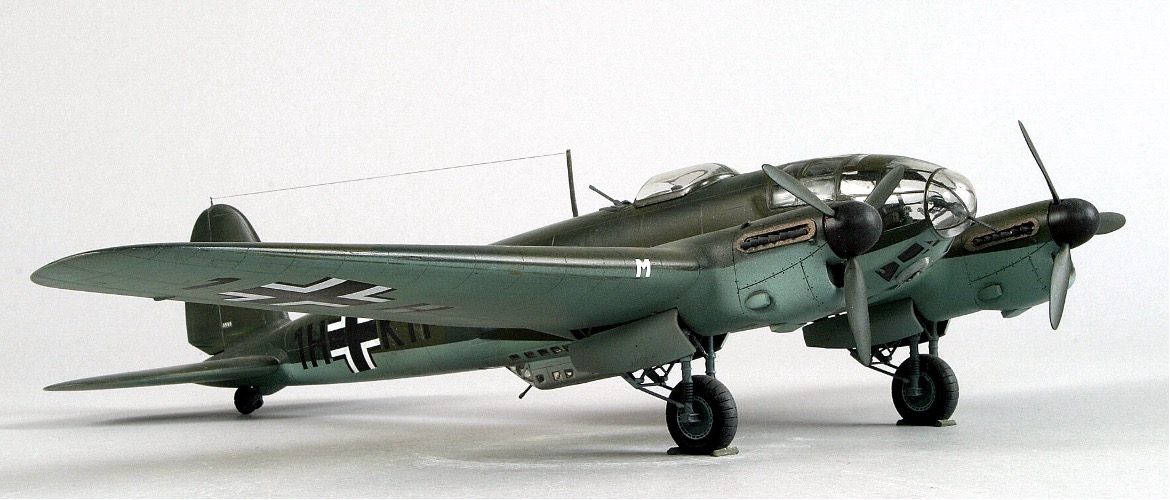
MODEL BY:
F. Hoback
Model Scale:
1/48
MODEL ADDED:
06/15/2002
historical significance
First Albuquerque Visit: 2002
Additional Information:
The Heinkel He 111 is a German airliner and bomber designed by Siegfried and Walter Günter at Heinkel Flugzeugwerke in 1934. All through development, it was described as a “wolf in sheep’s clothing”. Due to restrictions placed on Germany after the First World War prohibiting bombers, it was presented solely as a civil airliner, although from conception the design the He 111was intended to provide the Luftwaffe with a heavy bomber.
Perhaps the best-recognized German bomber of World War II due to the distinctive, extensively glazed “greenhouse” nose of the later versions, the Heinkel He 111 was also the most numerous of the Luftwaffe bombers during the early stages of the war. As the war progressed, the He 111 was used in a wide variety of roles on every front in the European theatre. It was used as a strategic bomber during the Battle of Britain, a torpedo bomber in the Atlantic and Arctic, and a medium bomber and a transport aircraft on the Western, Eastern, Mediterranean, Middle Eastern, and North African Front theatres.
The Heinkel He 111P incorporated the updated Daimler-Benz DB 601A-1 liquid-cooled engine and featured a newly designed nose section, including an asymmetric mounting for an MG 15 machine gun that replaced the ‘stepped’ cockpit with a roomier and more aerodynamic glazed step less cockpit over the entire front of the aircraft. The P-2, like the later P-4, was given stronger armor and two MG 15 machine guns in “waist” mounts on either side of the fuselage and two external bomb racks.
On September 6, 1961, the Confederate Air Force (CAF) was chartered as a nonprofit Texas corporation with the mission to acquire, restore, and preserve in flying condition a complete collection of combat aircraft flown by all military services of the United States. By the end of the first year, there were already nine aircraft in the CAF fleet.
In 1965, the first museum with 26,000 square feet of space was completed at old Rebel Field, in Mercedes, Texas. In 1968, the CAF move to Harlingen, Texas where they occupied three large buildings. During this time the CAF fleet continued to grow and now included several medium and heavy bombers such as the B-29, B-25, B-17 and B-24.
Beginning in 2002, the Confederate Air Force changed their name to the Commemorative Air Force in order to better reflect the actual mission of the organization. Today the CAF, headquartered at the Dallas Executive Airport in Dallas, Texas, has a fleet of more than 175 aircraft representing more than 60 different types along with planes from foreign countries and military conflicts since World War II available for the education and enjoyment of present and future generations of Americans.
The Confederate Air Force (which is called the Commemorative Air Force today) added the Heinkel He-111-P-2 to their fleet and the plane eventuality became based with the Phoenix wing of the CAF.
After performing at a CAF Air Show in September of 2002, the He-111-P-2 was in route to its home base when the aircraft developed engine trouble and landed in Albuquerque New Mexico. Cutter Aviation mechanics fixed the problem and aircraft returned to Phoenix the next day. Later while doing an air show in Cheyenne, Wyoming, the HE-111-P-2 crashed following engine failure. The crash killed one pilot and the aircraft was a total loss.
GALLERY:
SEARCH OUR DATABASE:

